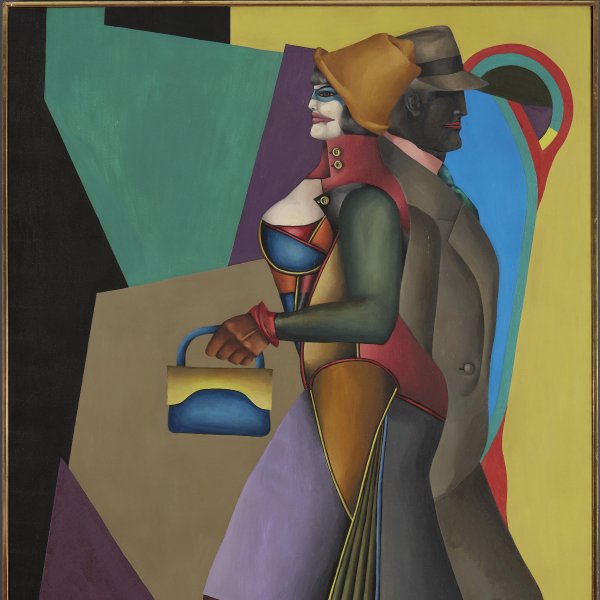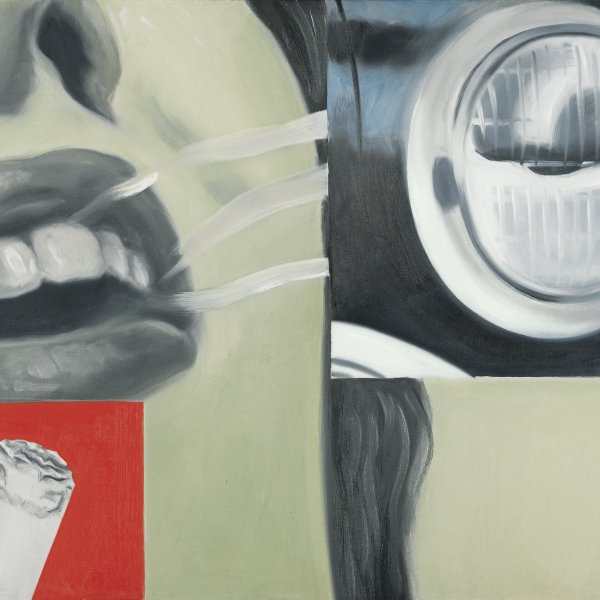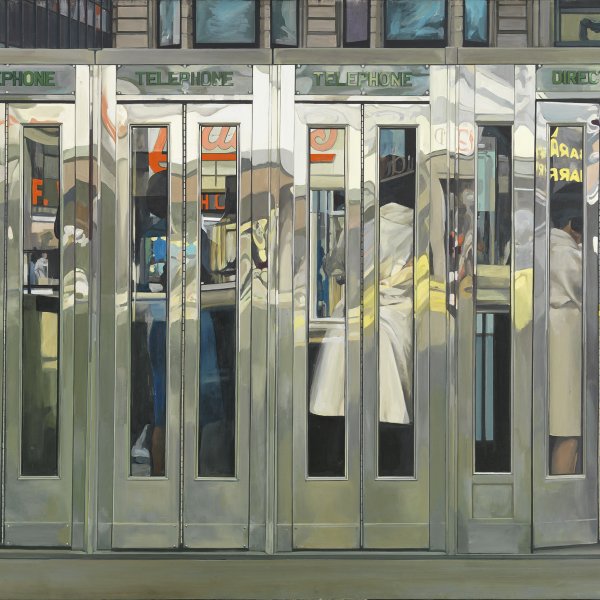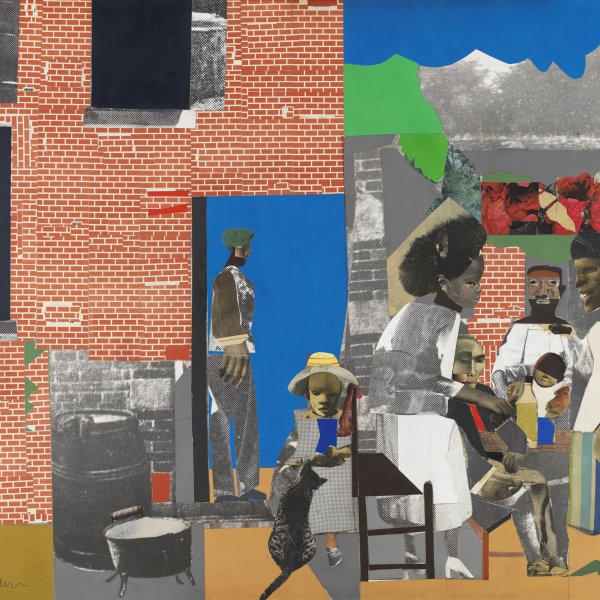Woman in Bath
Inspired by a romantic comic-strip, Woman in Bath features a basic range of primary colours—blue, yellow and red—applied using Lichtenstein’s characteristic Benday dot technique. The woman’s hands and face, outlined by thick black lines against a white background, stand out from the static geometry of the tiled wall behind her. Lichtenstein was one of the painters who abandoned the language of Abstract Expressionism in the 1960s, giving rise to the Pop Art movement. Here, in his treatment of a subject often addressed in the history of art—in the form of ‘The Bath of Venus’—he succeeds in challenging appearances, replacing the mechanical reproduction of the cartoon by the manual work of the painter.
In the 1960s, Roy Lichtenstein and other American artists of his generation, such as Andy Warhol, Tom Wesselmann and James Rosenquist, reacted against the language of Abstract Expressionism and gave rise to the Pop movement. At a time of economic expansion and prosperity in which major social advances had brought with them a new opulence characteristic of the age, these artists began to turn their gaze to everyday objects, advertisements and other consumer society products to use as subject matter for their works.
Lichtenstein produced his own personal portrait of the new America using a totally new artistic language: the so-called Benday dots process used to print comic strips, which was invented in 1879 by Benjamin Day. By using comic strip images and techniques in his work, the painter succeeded in rebelling against the texture and gesture of his abstract predecessors and exploring the complex connections between art and popular culture. Comic strips, which circulated in thousands of copies of newspapers and magazines, were not intended as works of art but as a means of transmitting synthetically a narrative content that aroused a particular emotion. Although at first sight Lichtenstein’s works appear no more than enlarged comic strips, when they are analysed at length it can be seen how different they are. By isolating these synthetic images, reproducing them by hand and changing their format, he achieved an impression of dispassionate objectivity devoid of any subjective feeling, which enabled him to make a rigorous artistic reflection. Lichtenstein thus strips them of their normal consumption and manages to alter appearances by replacing the mechanical reproduction of the comic strip with the manual work of the painter. Insofar as his works are a pictorial representation of a mechanical printing process, Lichtenstein succeeded in bringing together fine art and commercial design, thereby challenging the foundations on which painting had previously been based by converting a banal image into a work of art.
The Museo Thyssen-Bornemisza Woman in Bath was painted in 1963, most likely inspired by a sequence from a romantic serial. The subject of a bathing woman, a fairly frequent theme in art history in the form of The Toilet of Venus, was commonly depicted by Pop artists. The female figure, her contours delimited by thick lines set against a white background, is painted in an elementary palette of primary colours — blue, yellow and red — applied using the characteristic Benday dots. Gail Levin links this work to another oil painting produced the same year, Drowning Girl. In both compositions Lichtenstein shows the face and hands of a woman in water, but whereas the figure in the Museo Thyssen-Bornemisza painting is placidly enjoying a bath and gazes at the viewer with a broad smile, the girl in the other painting, who wears a contorted expression, is drowning in a sea of her own tears. The smiling figure of the former stands out against the static geometry of the background tiled wall, while the image in the painting in The Museum of Modern Art is caught up in a whirlpool of turbulent water which, according to Lichtenstein’s own testimony, is copied from the Japanese artist Hokusai’s engraving of The Great Wave.
The disturbing women in Lichtenstein’s paintings of the mid 1960s are embodiments of modern heroines. He shows them in different poses: sometimes as busy housewives, in a role they accept smilingly in a male-dominated world; on other occasions as characters in dramas of passions, in which they express anxiety, nervousness and fear. By portraying this stereotyped image of women of his day in his art, Lichtenstein merely intended to make a plastic statement about their need to aim for a new ideal: “Women draw themselves this way — that is what makeup really is. They put their lips on in a certain shape and do their hair to resemble a certain ideal.”
Paloma Alarcó
Emotions through art
This artwork is part of a study we conducted to analyze people's emotional responses when observing 125 pieces from the museum.










